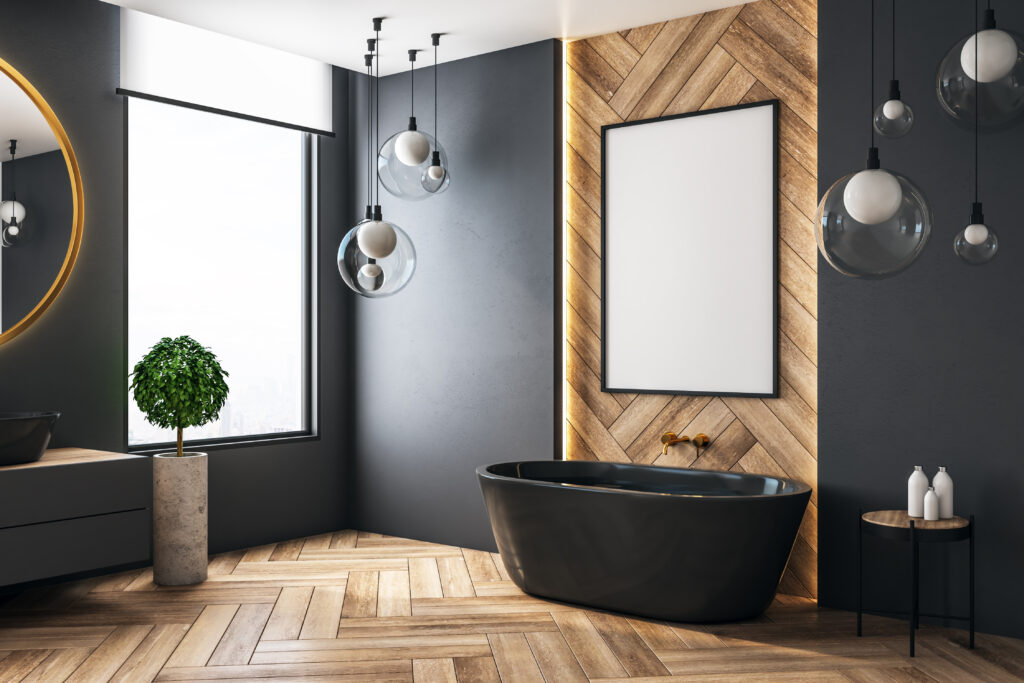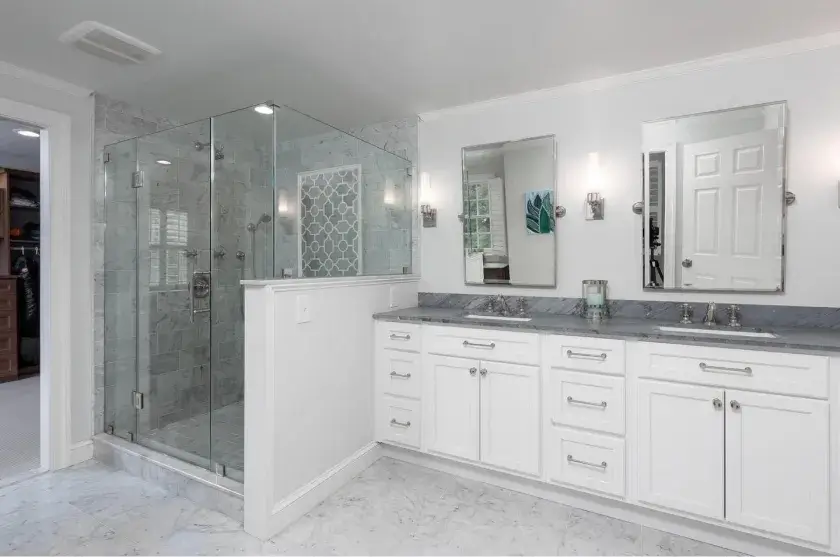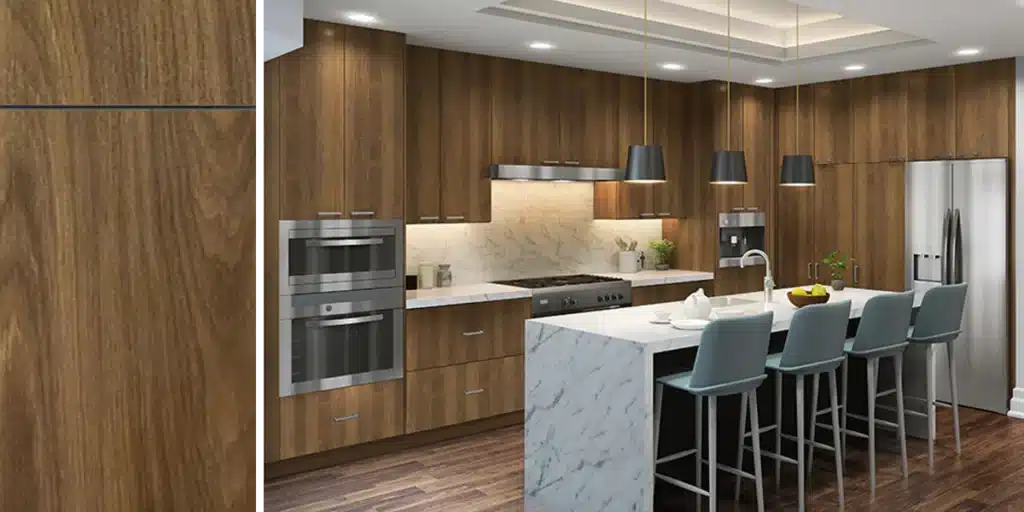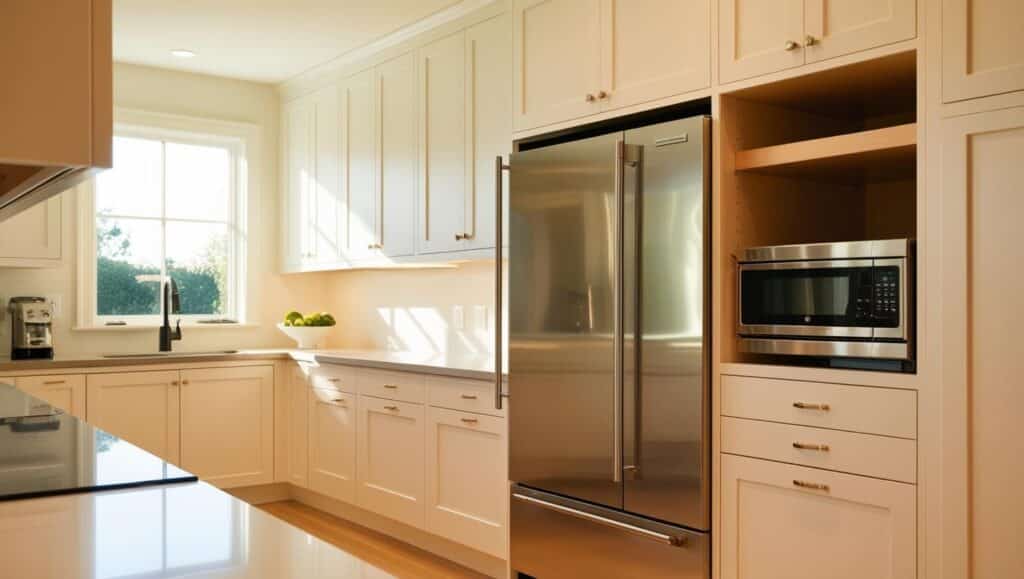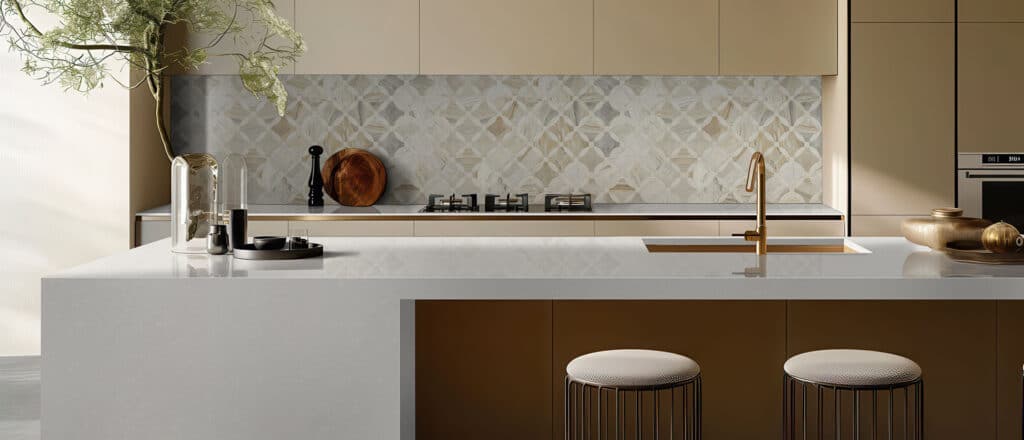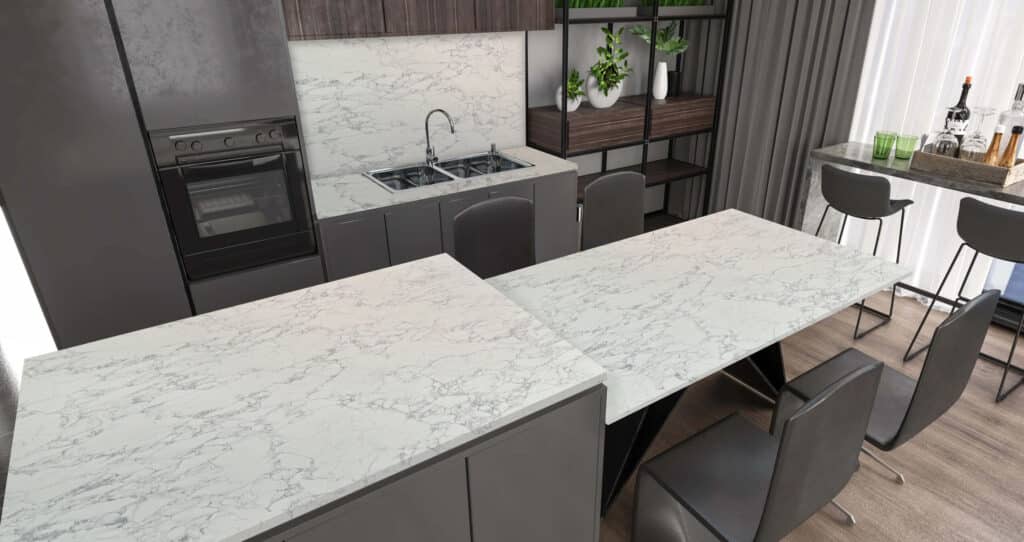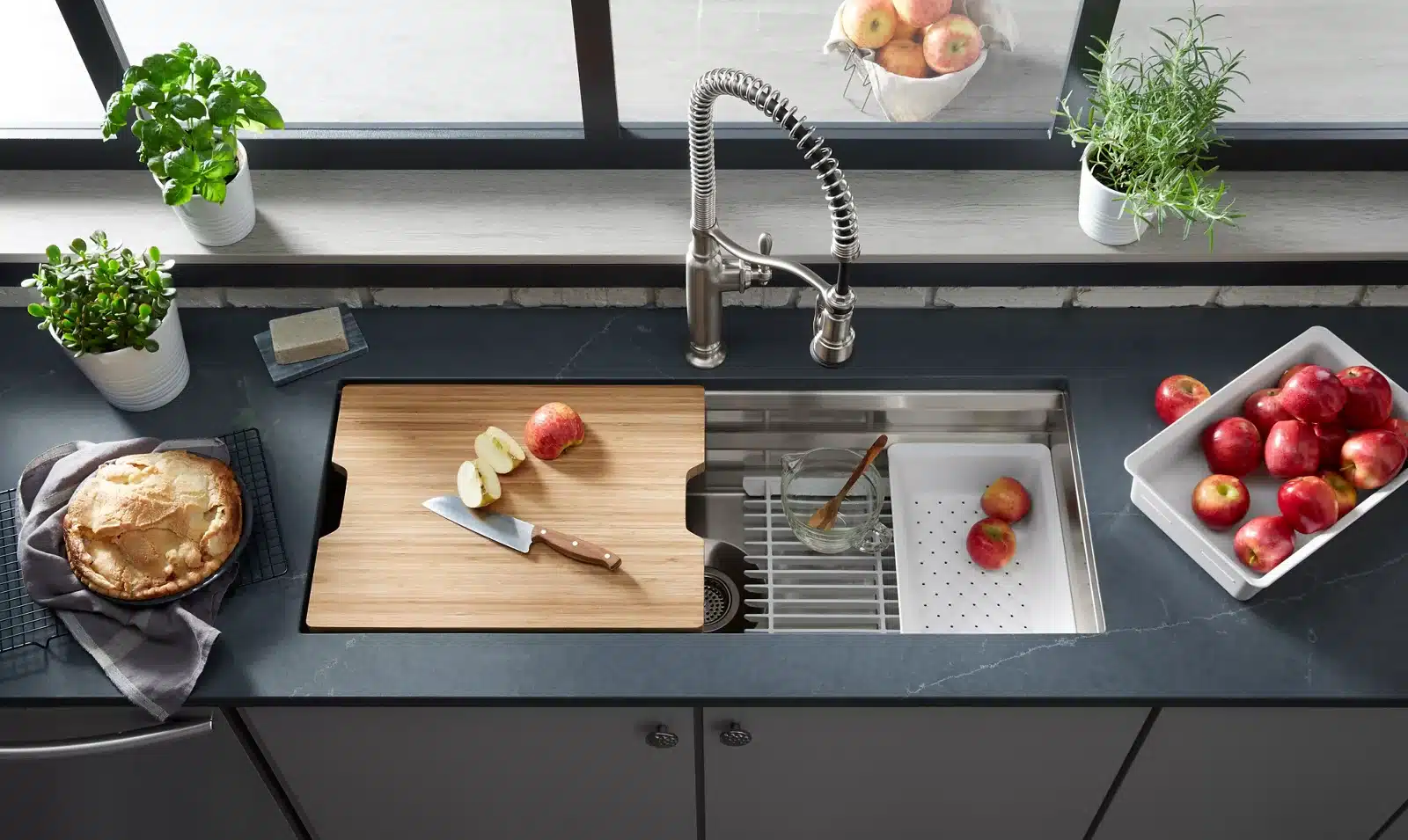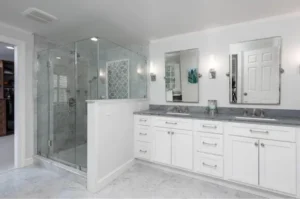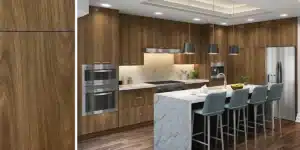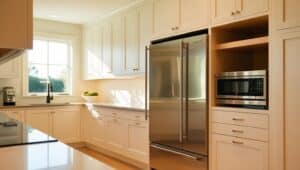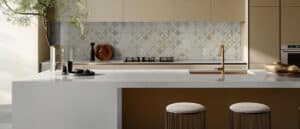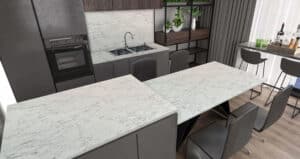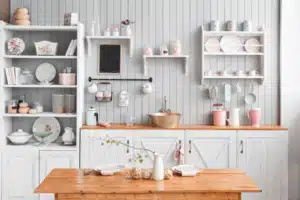Your kitchen sink is one of the most frequently used fixtures in your home, playing a crucial role in meal prep, cooking, and cleanup. Choosing the right sink can enhance your kitchen’s functionality and aesthetics. The perfect sink isn’t just about looks—it should suit your cooking habits, kitchen layout, and maintenance preferences.
At Trend Kitchen + Bath, we help homeowners find the perfect sink to complement their kitchen design. Whether you are upgrading your kitchen, remodeling entirely, or just looking for inspiration, understanding the different types of sinks available is crucial. The right sink can improve efficiency, enhance the beauty of your space, and even increase the value of your home.
Below, we explore various sink styles, their pros and cons, and how to choose the right one for your needs.
1. Undermount Sinks
Undermount sinks are installed beneath the countertop, creating a seamless look and making cleanup easy. They work beautifully with solid surface countertops like quartz and granite, adding a sleek, modern feel to your kitchen.
Pros:
- Easy to clean: With no raised edges, crumbs and debris can be wiped directly into the sink.
- Sleek design: Creates a modern, minimalist look that enhances aesthetics.
- Maximizes counter space: Since the sink is mounted underneath, there’s more usable surface area.
Cons:
- Requires professional installation: Not a DIY-friendly option, as it needs to be securely mounted to the underside of the countertop.
- Limited to certain materials: Works best with solid countertops like granite, quartz, or marble—not laminate or tile.
2. Top-Mount (Drop-In) Sinks
Also known as drop-in sinks, top-mount sinks have a visible rim that sits on top of the countertop. They’re easy to install and work with almost any counter material, making them a budget-friendly choice.
Pros:
- Easy installation: Can be installed without professional help, making it ideal for DIY projects.
- Versatile: Works with a variety of countertop materials, including laminate and tile.
- Affordable: One of the most budget-friendly sink options.
Cons:
- Rim collects debris: The lip of the sink can trap dirt and grime, requiring frequent cleaning.
- Less sleek appearance: Doesn’t provide the same streamlined, high-end look as undermount sinks.
3. Farmhouse (Apron-Front) Sinks
Farmhouse sinks feature a deep basin and a front-facing panel that extends beyond the cabinets. They add a rustic yet timeless charm to kitchens and provide ample space for washing large pots and pans.
See different farmhouse sink styles here.
Pros:
- Spacious: Ideal for washing oversized cookware, trays, and baking sheets.
- Timeless appeal: Works well in traditional, rustic, and modern farmhouse kitchens.
- Durable: Often made of sturdy materials like fireclay, cast iron, or stainless steel.
Cons:
- Custom cabinetry required: The exposed front means cabinets must be modified for installation.
- Heavy: Requires additional support due to its weight, especially if made from cast iron.
4. Double Basin Sinks
Double basin sinks offer two compartments, making multitasking easier. They’re perfect for homeowners who prefer to separate dishes from food prep or soaking.
Pros:
- Great for multitasking: Allows washing on one side and rinsing or drying on the other.
- Flexible options: Comes in 50/50, 60/40, or even 70/30 basin configurations.
Cons:
- Limited space for large items: The divided basin can make washing oversized pots and pans challenging.
- Takes up more counter space: Might not be the best fit for small kitchens.
5. Single Basin Sinks
A single basin sink features one large compartment, providing ample space for washing larger items. This style is popular in contemporary kitchen designs.
Pros:
- Spacious design: Ideal for washing big pots, baking sheets, and large dishes.
- Modern aesthetic: Sleek and simple, making it a stylish choice.
Cons:
- No separation: Lacks the ability to keep washing and rinsing tasks separate.
6. Corner Sinks
Designed for kitchens with limited space, corner sinks maximize unused counter areas. They typically feature a double basin design and work well in L-shaped or U-shaped kitchen layouts.
Pros:
- Saves space: A great option for compact kitchens that need efficient layouts.
- Utilizes unused corners: Turns an awkward space into a functional workstation.
Cons:
- Difficult installation: Requires precise plumbing adjustments.
- May limit workspace efficiency: Might not be as convenient for daily tasks as a centrally located sink.
7. Workstation Sinks
Workstation sinks are a modern innovation that combines a sink with built-in accessories like cutting boards, drying racks, and colanders. They’re perfect for maximizing efficiency in a busy kitchen.
Pros:
- Multi-functional: Converts your sink into a meal prep and cleanup station.
- Space-saving: Keeps countertops clear by integrating accessories within the sink area.
Cons:
- Expensive: Costs more than standard sinks due to additional features.
- Requires counter space: The larger size may not be ideal for compact kitchens.
Choosing the Right Sink for Your Kitchen
When selecting a kitchen sink, consider your cooking habits, available space, and design preferences. Whether you love the elegance of a farmhouse sink or the practicality of a workstation sink, Trend Kitchen + Bath can help you find the perfect fit.
If you’re planning a full kitchen remodel, selecting the right sink is just one piece of the puzzle. Pair it with the best countertops, cabinetry, and fixtures to achieve a cohesive and functional design. Check out our guide on kitchen remodeling essentials.
Need help choosing the right sink? Visit our showroom or contact us today to explore our selection of high-quality kitchen sinks and expert remodeling solutions.


